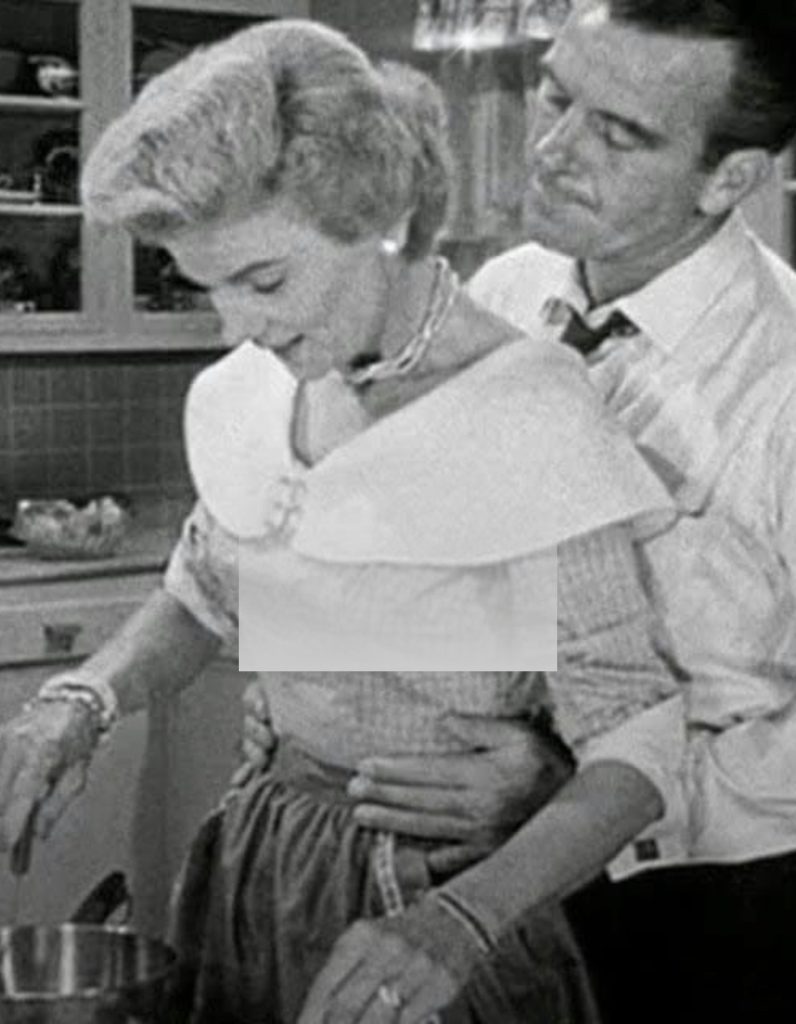Leave It to Beaver, the classic sitcom from the 1950s and early 1960s, painted an idealized picture of American family life, with values many still cherish. Yet, like any show, it had its share of amusing goofs and behind-the-scenes quirks that fans have come to love. These moments remind us that even the most polished productions have their imperfections, which often slip by unnoticed. From outdated calendars to wardrobe choices with hidden stories, here’s a look at some of the most intriguing goofs and bloopers in Leave It to Beaver.
The Iconic Calendar Mix-Up: An Unchanging Prop

One of the most interesting slip-ups in Leave It to Beaver involves June Cleaver’s kitchen calendar. As the ever-organized mom, June’s character wouldn’t be complete without a calendar to keep track of the family’s schedule. However, eagle-eyed fans noticed something strange: the dates on her calendar didn’t match the actual year of the episode’s airing.
In the 1963 episode titled “The Poor Loser,” the calendar in the Cleaver kitchen displayed dates from a previous year, likely 1961. For viewers paying close attention, this small detail served as a reminder that even in this idyllic world, continuity sometimes took a backseat. It’s a minor goof, but it’s one that fans still chuckle about, given June’s reputation as the ultimate homemaker.
Mayfield Misspelling: The Baseball Ticket Blooper
Another funny blooper comes during an episode where Ward and Beaver plan to attend a baseball game. In a close-up shot, we get a clear look at the ticket. Sharp viewers may have noticed a subtle but glaring error: the town name, “Mayfield,” is misspelled as “Mayfied” in small print on the ticket. This tiny slip-up contrasts with the show’s overall polish and perfectionism.
This little detail didn’t go unnoticed by fans who were watching closely. Although it didn’t affect the storyline, it became one of those “blink-and-you-miss-it” moments that adds a layer of charm to the series, reminding us that even the best productions can have tiny imperfections.
The Story Behind June Cleaver’s Pearls and High Heels
Barbara Billingsley’s portrayal of June Cleaver set a standard for TV moms with her polished look and calming presence. But her signature pearls and high heels were more than just a fashion choice. In fact, there’s an interesting story behind both accessories.
Billingsley wore her trademark pearls to hide a small surgical scar on her neck, cleverly blending necessity with her character’s refined look. The high heels also served a practical purpose: as her on-screen sons, Jerry Mathers (Beaver) and Tony Dow (Wally), grew taller, the heels helped maintain the height balance during scenes. It’s details like these that make June Cleaver’s appearance memorable, while also revealing the subtle adjustments the production team made to keep the illusion intact.
Real-Life Bond Between Jerry Mathers and Tony Dow
The chemistry between Jerry Mathers and Tony Dow, who played brothers Beaver and Wally Cleaver, felt so genuine that many fans assumed they had a sibling-like bond in real life. And as it turns out, they did. Despite their on-screen bickering, Mathers and Dow shared a close friendship that extended beyond the show’s run.
Their natural connection brought authenticity to the show, making their brotherly relationship resonate with audiences. In a 2006 interview, Jerry Mathers described Wally as “the perfect big brother,” a compliment that highlighted the bond they shared both on and off the screen. This connection was one of the reasons the show felt so real to viewers and has remained a beloved classic.
Breaking Television Taboos: The Toilet Controversy

One of the most unusual milestones in Leave It to Beaver was an episode that featured a bathroom scene—a rarity for television at the time. In one episode, Wally is seen carrying a toilet seat, making Leave It to Beaver one of the first shows to include such a prop on screen, albeit indirectly.
While it might seem minor today, this was groundbreaking back in the 1950s, as networks were cautious about showing bathrooms, let alone a toilet. The only visible part was the tank, but even that was enough to stir some debate. This moment demonstrated the show’s subtle approach to breaking norms, and it’s remembered as a small yet significant step in TV history.
Wardrobe Goofs and Unintended Fashion Statements
Fashion played an integral part in establishing the show’s tone, and the wardrobe was carefully selected to reflect the family’s wholesome, polished image. However, even with meticulous planning, the occasional wardrobe goof slipped through.
For instance, in several scenes, continuity errors appeared with the Cleavers’ clothing—sometimes characters would switch outfits within the same episode, or a character would appear in the same outfit on consecutive days, something unlikely for a well-to-do family. These small inconsistencies added a touch of realism to the show’s otherwise picture-perfect presentation, as they reflect how everyday life is rarely as seamless as it appears on screen.
The Timeless Appeal of Leave It to Beaver’s Imperfections

Despite these small goofs and bloopers, or perhaps because of them, Leave It to Beaver remains a beloved part of television history. The show’s minor errors didn’t take away from its message; in fact, they made it more endearing. The occasional calendar mismatch, misspelled ticket, or hidden scar contributed to the show’s charm, reminding audiences that even in an idealized world, perfection doesn’t really exist.
Leave It to Beaver set a high standard for family-oriented television and left a legacy of humor, warmth, and integrity. These small, often overlooked bloopers serve as a nostalgic nod to the real-life challenges of production and the magic that happens when storytelling takes priority over perfection.
Conclusion: Celebrating the Flaws in a Classic Show
Leave It to Beaver is celebrated not just for its wholesome storytelling, but also for the unintentional details that made it feel a bit more real. These hidden goofs—whether they involved a misprinted ticket, an out-of-date calendar, or a clever wardrobe choice—only add to the charm of the series. They serve as small reminders that even in a show as polished as Leave It to Beaver, life isn’t always flawless.
In an era where television often felt like an escape from reality, these imperfections gave viewers something familiar and relatable. As we look back on this classic show, we can appreciate not only the values it portrayed but also the unpolished moments that slipped through, making Leave It to Beaver a timeless example of family entertainment at its best.


